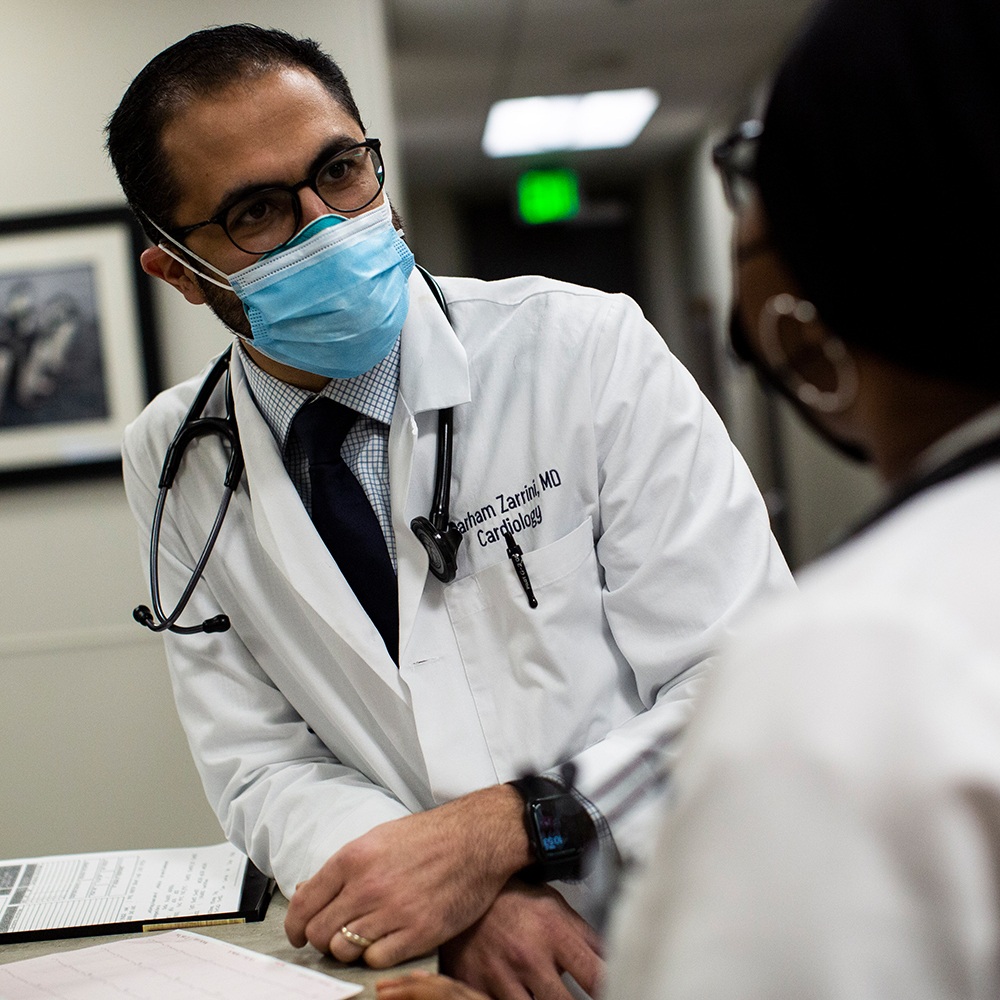Deep Venous Thrombosis (blood clot)

Overview
What is a Deep Vein Thrombosis (DVT)?
Deep vein thrombosis (DVT) is a serious condition that occurs when a blood clot forms in a deep vein and usually develops in the lower leg, thigh or pelvis. DVT can happen to anyone and can cause serious complications and disability. If the blood clot breaks loose, travels to your lungs and gets stuck in your lungs, it will cause a pulmonary embolism and block the flow of blood. A pulmonary embolism is a serious condition that can cause death. If DVT is discovered early, it is preventable and treatable.
There are several conditions that can increase your risk for a DVT:
- You have an inherited condition that increases your risk of blood clots.
- Being older than 60 increases your risk, but it can happen at any age.
- Cancer treatments such as chemotherapy.
- Injury.
- Long periods of inactivity such as when traveling or prolonged bed rest.
- Pregnancy and first 6 weeks after giving birth.
- You are overweight.
- Smoking.
- Inflammatory bowel disease.
- Heart failure.
- Taking birth control pills.
- Hormone therapy.
Your Saint John’s Physician Partners cardiologist can diagnose and treat deep vein thrombosis. Schedule an appointment today if you have symptoms or are concerned you may have this condition.
Symptoms
DVT Symptoms
DVT can occur without any discernible symptoms, but visible signs and symptoms of DVT may include:
- Swelling the affected leg.
- Red skin on the leg.
- Pain in the affected area.
- Feeling of warmth in the affected leg.
It’s important to know the warning signs of a pulmonary embolism and that you get immediate help or call 911:
- Chest pain that worsens when you take a deep breath.
- Very low blood pressure and feeling light headed, dizzy or fainting.
- Sudden shortness of breath.
- Rapid pulse and breathing.
- Coughing up blood.

Risks
DVT Risks and Complications
Complications of DVT may include:
- Pulmonary embolism is a life-threatening complication when a blood clot travels to your lung and blocks blood flow.
- Postphlebitic syndrome is damage to your veins due to a blood clot reducing the blood flow to the affected area and causing swelling and pain and skin discoloration.
- Treatment complications due to prescribed blood thinners that may cause bleeding.
Diagnosis
DVT Diagnosis
Tests used to rule out or diagnose DVT include:
D-dimer blood test
D-dimer blood test checks for increased blood levels of D-dimer, a protein produced by blood clots.
Ultrasound
Ultrasound uses sound waves to create pictures of how the blood flows through your veins.
Venography
Venography is when a dye is injected into a large vein in your foot or ankle and an X-ray to look for blood clots.
Magnetic resonance imaging
Magnetic resonance imaging is used to diagnose DVT in your abdomen.
Treatments
DVT Treatments
The primary goals of DVT treatment is to stop the blood clot from getting bigger, preventing the clot from breaking off and going to your lungs, reducing the possibility of another blood clot and mitigating long-term complications. DVT treatment options your cardiologist may recommend include:
Blood thinners
Blood thinners to help prevent the clots from getting bigger and reduce the risk of developing more.
Clot busters
Clot busters, called thrombolytics, are often prescribed in serious cases with severe blood clots.
Filters
Filters are inserted into a large vein in your abdomen to prevent clots that break loose from going into your lungs.
Compression stockings
Compression stockings reduce the chance that your blood will pool and clot. They help prevent swelling.
Surgery
In severe cases, the clot might have to be removed surgically
Your cardiologist will review your treatment plan and discuss benefits and possible risks and complications so you can make an informed decision.
Specialists